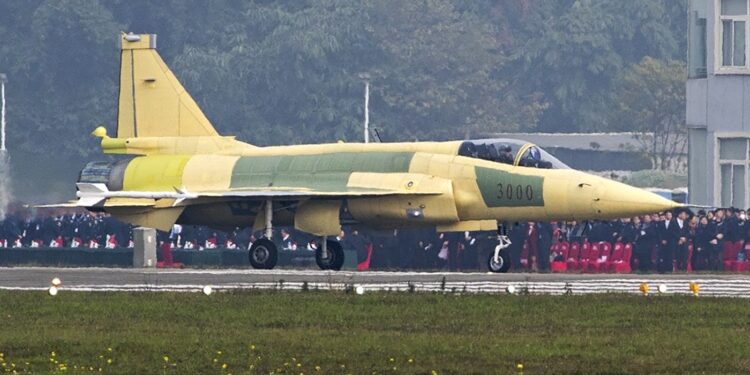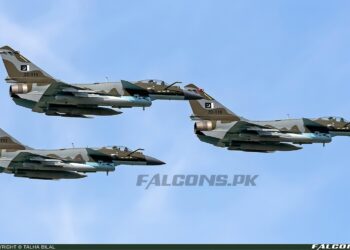By Franz-Stefan Gady
The Pakistan Aeronautical Complex/Chengdu Aerospace Corporation (PAC/CAC) JF-17 “Thunder” Block III multirole fighter aircraft conducted its maiden flight on December 15 in China’s southwestern province of Sichuan, according to Chinese social media reports.
The maiden flight of the JF-17 Block III prototype reportedly took place at CAIG’s production facility at Chengdu-Huangtianba. Images of the aircraft’s take off show the JF-17 Block III armed with PL-5EII short-range air-to-air-missiles (AAMs).
According to an analysis by Jane’s, the new aircraft features a couple of additions over previous systems including a new wide-angle holographic head-up display and a new imaging infrared (IIR)-based missile approach warning system. While JF-17 Block I and II variants are reportedly powered by a Chinese license-built Klimov RD-93MA turbofan engine, the Block III version of the JF-17 are slated to receive the RD-93MA or Chinese WS-13 engine. As I explained elsewhere:
JF-17 Block III fighters will apparently receive a new electronic warfare system, upgraded avionics including a three-axis fly-by-wire digital flight control system, a helmet-mounted display and sight system, and Pakistan’s first Chinese-made active electronically scanned array (AESA) radar system. Two such radar systems are currently under evaluation, according to the PAF Air Chief: the Nanjing Research Institute of Electronics Technology’s KLJ-7A radar and the Leihua Electronic Technology Research Institute’s (LETRI) LKF601E.
Pakistan is reportedly also still considering Leonardo’s Grifo-E AESA radar system. The aircraft is expected to operationally deploy with the Pakistan Air Force (PAF) this year. The service is reportedly looking to procure at least 50 JF-17 Block IIIs by 2024, according to the PAF Chief of Air Staff Air Chief Marshal Mujahid Anwar Khan.
The first two aircraft have reportedly already entered production at the Aircraft Manufacturing Factory (AMF) final assembly line at PAC Kamra.
“Production of subassemblies has already started for the first two 50 Block 3 aircraft, to be assembled next year, and will be followed by another 12 in 2021, 2022, 2023, and 2024,” PAC chairman Air Marshall Ahmer Shahzad was quoted as saying by AINonline in 2019. “We will assemble eight dual-seaters this year, followed by 14 in 2020, and the remaining four in 2021.”
PAC and CAC purportedly have an annual production capability of about 25 JF-17 aircraft. As I noted previously:
PAC has reportedly been producing 58 percent of the JF-17s airframe and subsystems — the wings, horizontal tail, vertical tail, and forward fuselage — while CAC produces 42 percent of it including the mid- and rear- fuselages. The aircraft parts arrive from China in kit form for local assembly. The JF-17 was chiefly designed to replace the PAF’s aging fleet of Chengdu F-7 and Dassault Mirage III/5 fighter jets.





